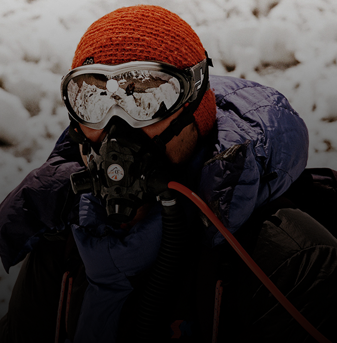
- admin
- May 26, 2025
Table of Contents
In the spring of 1924, George Mallory and Andrew “Sandy” Irvine began what would become one of the most legendary climbs in mountaineering history. Their goal? To become the first people to stand on the summit of Mount Everest. But they weren’t just carrying ropes, ice axes, and grit. They brought with them something far more controversial: oxygen tanks.
This was a bold move in an age when mountains were meant to be climbed with nothing but muscle and mental resolve. Some saw it as an innovation. Others saw it as cheating. Nearly 100 years later, that debate still lingers—but so does the impact of their decision.
A Mountain of Unknowns
In the 1920s, Everest was a complete mystery. No climbers had reached the summit, and the northern route was barely mapped. The weather was unpredictable. The terrain was brutal. The technology was primitive by today’s standards.
By the time of the 1924 expedition, Britain had already mounted two serious attempts. The first, in 1921, was a reconnaissance mission. The second, in 1922, pushed higher but ended in tragedy when an avalanche killed seven Sherpas. That failure, along with the unforgiving conditions, convinced Mallory and the team that climbing Everest without some form of assistance might simply be impossible.
That’s where oxygen came in.
Oxygen: Lifesaver or Shortcut?
At sea level, breathing is easy. But at Everest’s summit—over 29,000 feet—the air holds just one-third of the oxygen your body needs. Every step at that altitude is a battle. Muscles tire faster. The brain becomes foggy, and coordination slips. And if altitude sickness sets in, it can be deadly.
Mallory knew this. So did the rest of the team. However, many mountaineers of the time believed bottled oxygen violated the “purity” of climbing. Some critics called it unearned. Others argued it robbed the mountain of its challenge. One even said, “Only rotters would use oxygen.”
Still, Mallory made the call: they would use it.
The Engineer in the Ice
Andrew Irvine, just 22 years old, was an unlikely Everest climber. He didn’t have much Mountaineering history book or any experience. What he had was technical skill and strength. A standout rower at Oxford, Irvine was also a natural problem-solver. He took the expedition’s heavy, unreliable oxygen tanks and worked to make them more efficient. He shaved off weight, adjusted flow rates, and ensured the equipment could withstand the cold.
Though not all of his improvements were officially adopted, there’s good reason to believe some of his adjustments made it into the gear that Mallory and Irvine carried on their final climb.
To the team, Irvine became essential. Not just a porter or a backup climber—but a real asset.
Mallory’s Change of Heart
George Mallory wasn’t always sold on the idea of using oxygen. Early in his climbing career, he leaned toward tradition. To him, mountaineering was about confronting nature with nothing but human power and determination. But Everest—unlike anything else on Earth—forced him to reconsider.
After facing the brutal conditions of the 1922 expedition and witnessing firsthand what high altitude could do to even the fittest climbers, Mallory changed his stance. He began to see oxygen not as a weakness but as a tool that might mean the difference between reaching the top or not coming back at all.
What Happened on June 8, 1924?
Mallory and Irvine left their high camp on June 8 for their summit attempt. Noel Odell, a teammate watching from below, reported seeing them near the Second Step—a technical barrier just below the summit. And then… they vanished.
Did they make it to the top? We still don’t know. Mallory’s body was discovered in 1999, his oxygen rig still with him. Irvine has never been found. The mystery remains one of the greatest in the history of exploration.
But what’s clear is that their use of oxygen marked a shift—not just in tactics, but in mindset.
Their Legacy: Technology and Tenacity
Today, using oxygen on Everest is the norm. Almost every commercial expedition depends on it. Oxygen systems are lighter, safer, and far more effective than what Mallory and Irvine had. However, the principle remains the same: it helps climbers stay alive and focused in a place where the human body wasn’t meant to go.
Mallory and Irvine’s choice didn’t dilute the meaning of their climb. It redefined it. They showed that using the best tools doesn’t diminish the courage it takes to face the mountain. If anything, it raises the stakes. You’re not just climbing with strength. You’re climbing with purpose.
The Real Question: What Do We Value in Climbing?
Is mountaineering about suffering and purity? Or about problem-solving and progress?
Mallory and Irvine didn’t have Instagram followers or rescue helicopters. They weren’t chasing fame. They were trying to answer a simple question: Can we do this? Their use of oxygen was part of that question. Part of their answer.
And nearly a century later, climbers still breathe easier because they dared to bring tanks into the Death Zone.